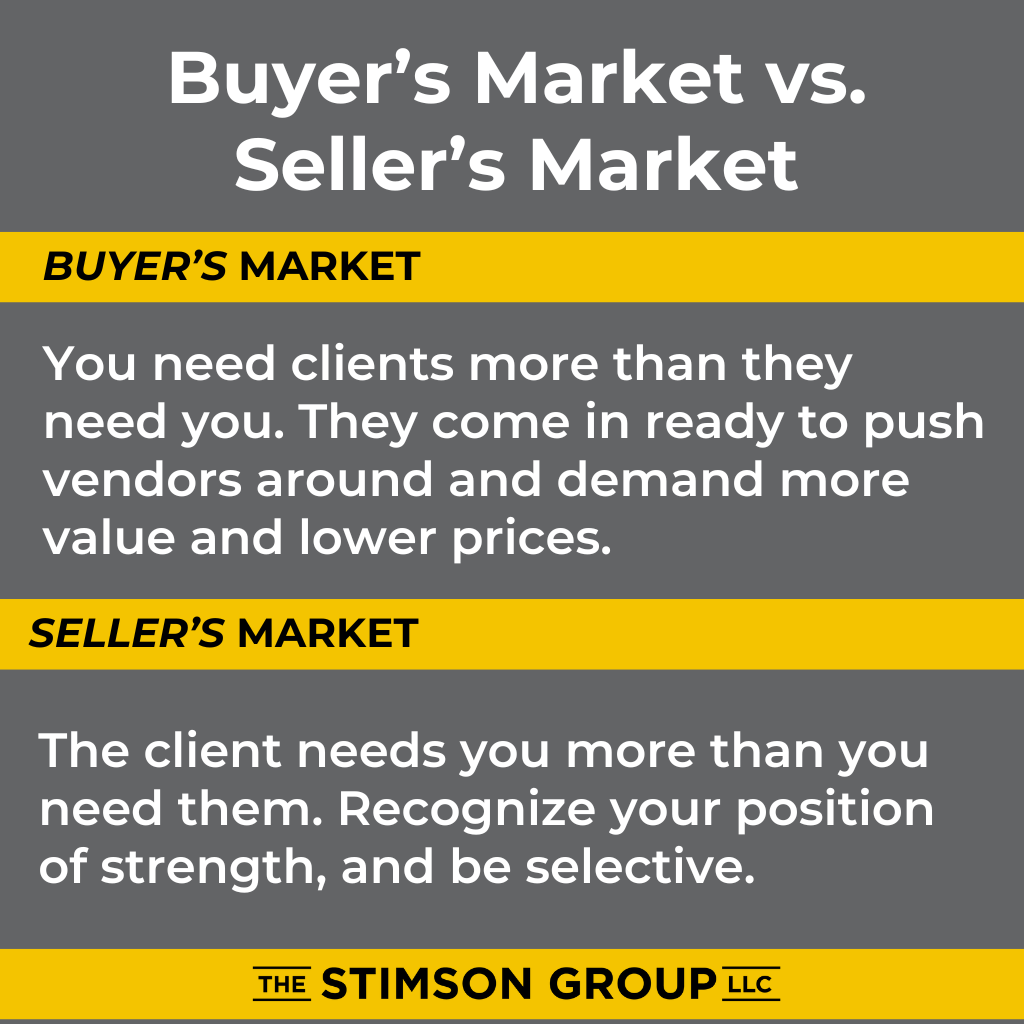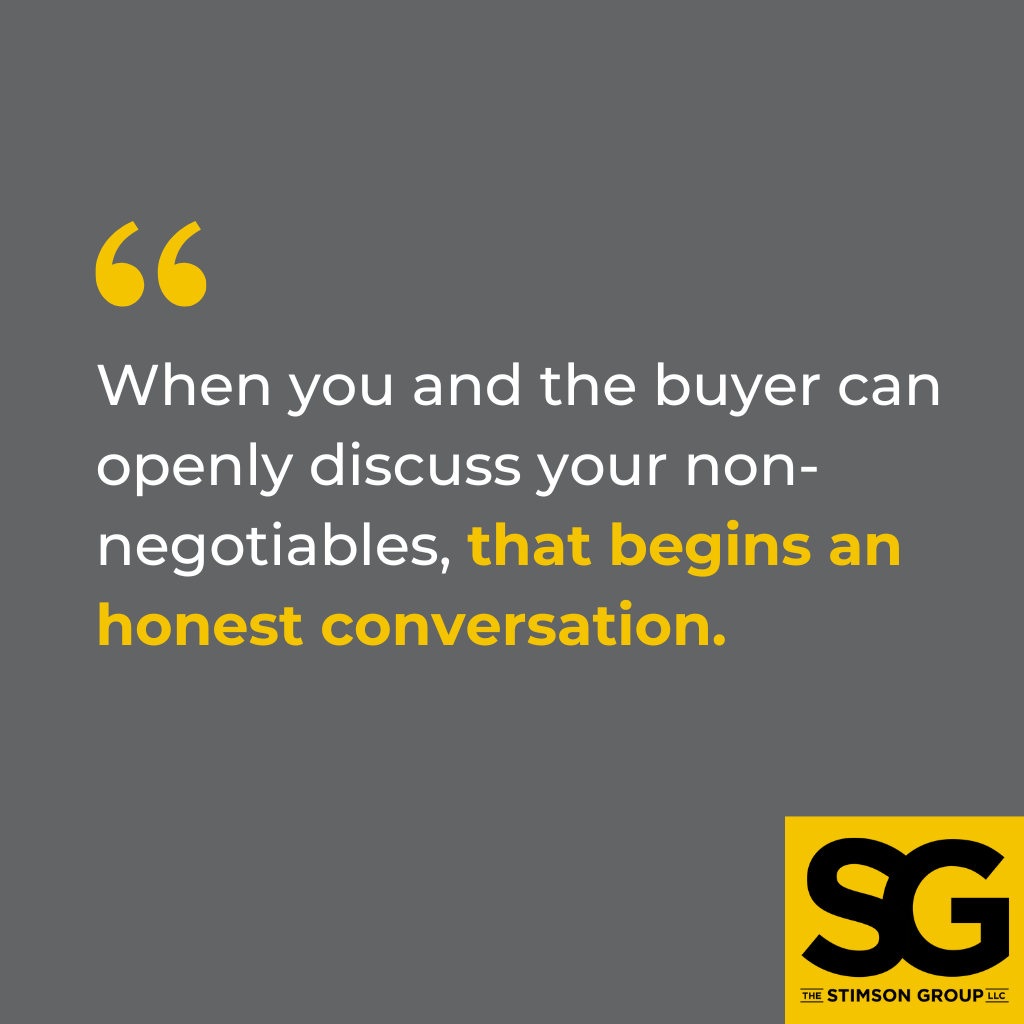
Listen instead on your Monday Morning Drive:
The “race to the bottom” is a mindset where businesses compete solely on price, sacrificing quality and value.
Think you’re not competing? Think again. Most companies are racing to the bottom — they just don’t realize it.

The Market Dynamics of Value
In a buyer’s market — when you need clients more than they need you — it’s easy to believe the buyer triggers the race to the bottom. They come in ready to push vendors around and demand more value and lower prices.
But you have more control in a buyer’s market than you think.You assume you can’t “turn off” the race to the bottom, but to gain the upper hand, you only have to establish whether the buyer is chasing the best price they can get or is looking for the best value they can find.
Conversely, in a seller’s market — when the client needs you more than you need them — you can turn off this race to the bottom… if you recognize your position of strength and have enough business to be selective.
However, I often see companies caught in a pricing spiral, even in favorable markets. Why? Because they’re not conducting proper outreach, their marketing is either subpar or nonexistent, and their pipeline is weak.
When you sell from a position of weakness, the buyer follows suit, even in a seller’s market.
The Revenue Trap
One of the clearest indicators that a company is sliding into the race to the bottom is when revenue becomes its primary success metric.
I see it all the time: Revenue becomes more important than profit, more important than being selective about clientele, and more important than leveraging your brand value.
This isn’t scalability. It’s a trap.
Nobody Wants This
Everyone on our side of the table hates the race to the bottom. Yet, we still see it all the time, particularly in how new customers approach us.
We don’t want to sell on price. We want to help the customer and make a profit at the same time.
Believe it or not, buyers don’t like the race to the bottom either — it leads to dishonest conversations with their suppliers.
Even if they’re a true classic price shopper, they still need a certain amount of honesty from the buyer to trust that they’re getting what they pay for, even if they’re chasing the lowest price. And the race to the bottom is an inherently dishonest conversation nobody wants to participate in.
The Fear Factor
Why does the race to the bottom take over our minds so quickly? It comes down to one word: fear.
We’re afraid that if we don’t win this job — if we don’t capture this revenue and/or earn this customer — we won’t have another chance. We see sales as a zero-sum game.
Listen to our language: We say “we lost the job” instead of “we didn’t win the job.” This subtle difference reveals volumes about our mindset.
When we say we “lost” the job, we admit we had already counted it as a win. We devoted all our resources to this hypothetical victory and stopped selling elsewhere. Not winning became a loss simply because it was our only focus.
Being afraid of losing a job is the old “counting chickens before they hatch” adage. If you’re faced with an opportunity, don’t add it to your wins and then work not to lose it. That’s when the race to the bottom mindset takes over.
The Transparency Paradox
Since the race to the bottom manifests through price, our solution must address how we handle pricing information. But here’s where it gets tricky: Pricing transparency is a double-edged sword.
On one hand, transparency can trigger the race to the bottom. It builds the playground for price shopping and sets the terms of the game. Both sellers and buyers get pulled into negotiating based on market conditions rather than value.
The solution is to reduce the pricing transparency and focus instead on the value you’re delivering, but that requires a huge amount of trust.
On the other hand, transparency uncovers breaking points sooner. When you and the buyer can openly discuss your non-negotiables, that begins an honest conversation.

Finding the Sweet Spot
The key is finding the right balance.
In a seller’s market, the buyer’s best move is to share their budget openly. In a buyer’s market, the seller’s best move is to lead with their best value proposition at their lowest sustainable price — not to start high and negotiate down.
Here’s what the race to the bottom looks like: I present a price, the customer gets a competitor’s quote, comes back saying, “They’ll do it for less,” and I lower my price in response. We need to break that cycle.
Instead, we need honest conversations that start with, “Here’s what I’m willing to do the job for.” No games, and no hidden margins to negotiate away. Just the right amount of transparency.
The Power of Walking Away
Perhaps the most crucial skill in avoiding the race to the bottom is knowing when to walk away.
Some clients simply won’t negotiate in good faith or pay what you charge today. At various times of the year, you need to charge more to maintain profitability. Let go of the jobs that won’t generate the profit you need.
Walking away from these negotiations isn’t failure. It’s strategy.
Recognizing Good-Fit Clients
On the flip side, when a buyer embraces honest conversation and transparency in trying to bring their event to life, stay in the game. These relationships are worth developing, even if you don’t win the immediate opportunity.
How can you tell the difference between genuine interest and lip service? Watch for this key indicator: a good-fit client no longer needs price comparisons to establish value. The trust you’ve developed offsets their need to shop around.
The race to the bottom is an inherently dishonest conversation nobody wants to have — not even the buyers. By focusing on honest relationships and walking away when necessary, we can break free from this destructive cycle and build partnerships based on genuine value.





Leave a Reply